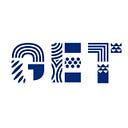Partnering with KOL, Duolingo is eyeing significant DAU increase in China

This July, Multilingual Online Learning App Duolingo announced its official entry into the Chinese market. Besides English and Spanish, the Chinese version curriculum newly introduces Japanese, Korean, French and Italian. Duolingo set up its first overseas office in Beijing, aiming to build a local team in order to achieve rapid growth in the Chinese market.
Few companies write “free” in their vision, but Duolingo does: “Learn a language for free.” This is due to the founder Luis von Ahn’s personal experience in learning English. During the upcoming GET2019 Summit, Luis von Ahn will present a plenary keynote, sharing his own story. As the second piece of the
Expanding Your Footprint in China series, this article aims to show our readers how a ToC products provider can make achievements in the complex Chinese market.

Developing localized features based on business goals
Till now, Duolingo had over 300 million registered learner across the world, within which Chinese learner achieved 15 million, with free access to studying course content in a videogame-like format every day.
In the Chinese market, Duolingo highlights not only the delivery of learning effects to users but also the accumulation of more registration. After launching its first overseas office in Beijing, Duolingo China has achieved double growth of DAU in the past 1 year, which is inseparable from the hard work and great efforts of its Chinese team.
Deciding whether or not to start business operations in China has been discussed by the company since 2015. “The Chinese market is unique and has vast potential,”, said Haina, Duolingo’s China marketing lead. “You will only have a real sense of the severe competition in this market when you are personally”. Therefore, vying for more new user is Duolingo’s crucial Chinese strategy in this initial stage.
One unique aspect of the Chinese market is the different registration habit. Chinese users prefer to sign up with phone numbers or through their WeChat account, whereas western users usually choose e-mail. Substantial user growth has occurred after engineers localized the technological approach. In addition, “word list” is a newly released feature to meet learners’ demand on vocabulary memory. “There are 100+ things we are passionate to do, but what we can do currently is optimize, and the linguistic experts will be hired to create more localized contents”, said Haina.
Meanwhile, retention has always been highlighted in Duolingo’s global strategy, and thus, the team launched an automatically-generated weekly learning report via users’ WeChat accounts. It has made a positive influence.
Making marketing strategies based on the characteristic of the products

“Duolingo has no absolute competitors in the Chinese market. If compared with top players in the language learning track, our advantage lies in language diversity, gamification, and ‘for free’”, Haina believes. “In China, most of products focus on English training, but Duolingo offers an online curriculum in 37 languages, including minority languages, and even endangered languages”. In addition, Duolingo is committed to providing a more interesting way to map the language learning progress.
“But users may only reach the primary or intermediate level when they finish all the English courses in our app”. Regarding this, Duolingo’s team is toiling away on developing various products to satisfy all the learning requirements. For instance, newly launched “Duolingo Stories” offers reading and listening comprehension tests for users who want to further improve their English skills.
Duolingo has also developed a language assessment system named Duolingo English Test, which can be done on a computer in 30 to 45 minutes rather than in person at a testing center. It is much cheaper than traditional language certification exams such as TOEFL and IELTS. More than 500 universities and institutions worldwide now accept it, including Yale, NYU and UCLA. “China has a large demand for studying abroad, so we believe there is great potential in China marekt.”, said Haina.

Although Duolingo has in-depth development of products, they still face a challenge in increasing brand exposure to gain higher brand awareness in such a large, but scattered market. Partnering with KOLs on TikTok, Duolingo has achieved significant DAU increase through Word-of Mouth form. “Our user are very open minded. They would love to accept new things, learn different languages, and experience diverse cultures”. Haina also proposed that the strategy needed to be changed according to market conditions in different regions. Duolingo is a successful case of promoting via the most influential media channels based on their own products’ characteristics.
Future plan: setting different marketing priorities to gather more users
Currently, Duolingo’s Chinese users are mostly concentrated in first-tier cities, indicating a large market opportunity in second- and third-tier cities. In the next year, Haina and her team will set different marketing priorities. “We will mainly promote minority language in the first-tier cities, and unleash the market potential in second- and third-tier cities for English learners.”
The company is also planning to create more peripheral gifts as intellectual property based on the cute green owl.
When it comes to suggestions for newcomers, Haina said: “You must be humble to explore what really works here, and test and learn in a fast speed”. Next week, we will come to the last piece of the series, exploring how the educational giant, Pearson, stimulates life-long learning in the Chinese market!
To get the most up-to-date China EdTech news and stories, please subscribe to our weekly newsletter or follow us on LinkedIn and Twitter.
